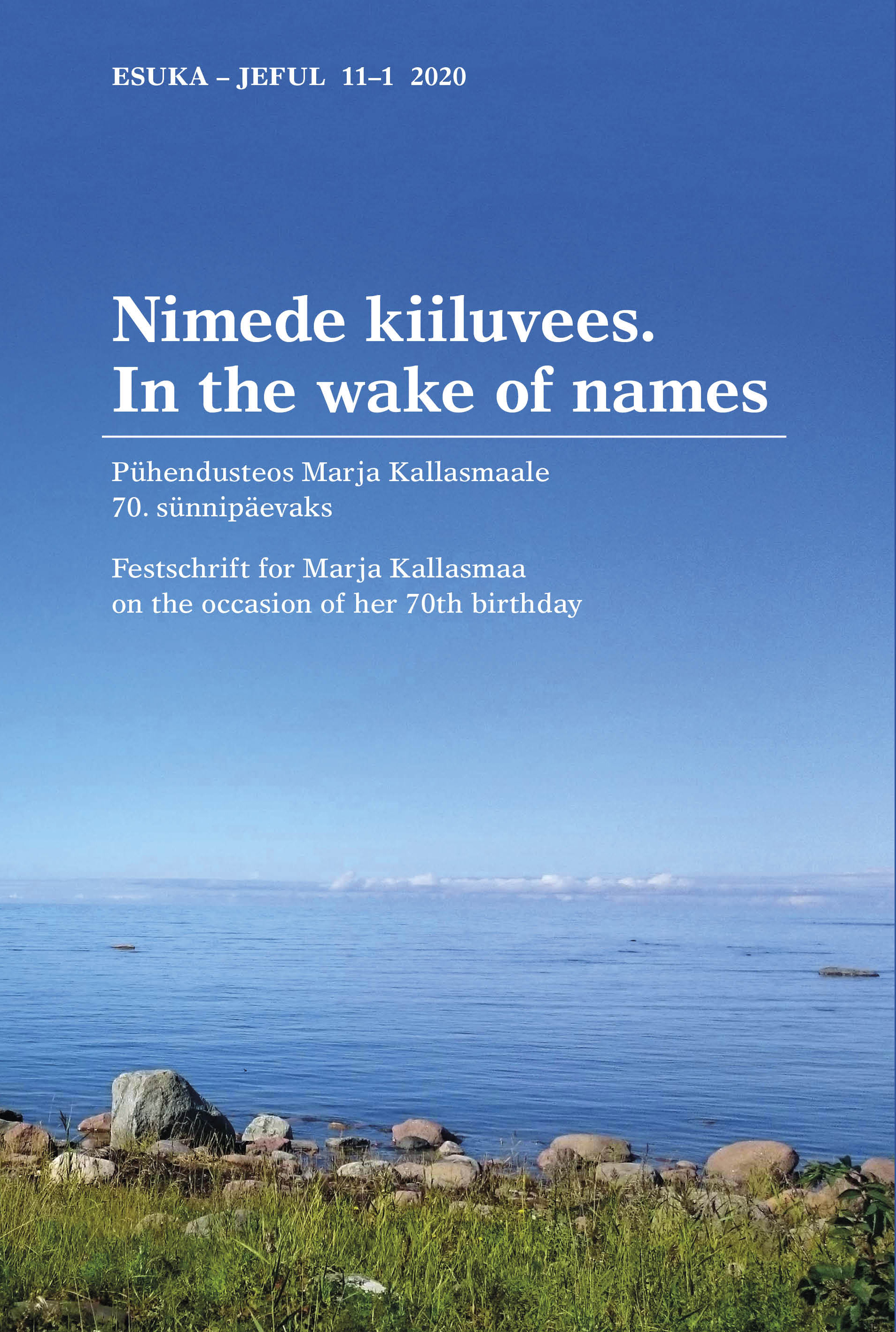Läänemeresoome mAs-isikunimed
DOI:
https://doi.org/10.12697/jeful.2020.11.1.04Keywords:
isikunimed, kohanimed, nimetuletus, muinasaegsed isikunimed, alamsaksa kirjapilt, läänemeresoome keeled, anthroponyms, toponyms, name derivation, ancient anthroponyms, Low German spelling, Finnic languagesAbstract
Artikkel käsitleb läänemeresoome ajaloolisi isikunimesid, mille lõpus on nimeformant (sufiks) -mas või -mäs (ühine tähistus -mAs) Antakse ülevaade, milliseid mAs-nimesid ja ka muid mVs-nimesid on allikatest leitud. Püstitatakse hüpotees, et kirjapiltidega -mes ja -meß esindatud isikunimed ei sisalda järelosisena sõna mees, nagu mitmed uurijad varem on väitnud. Analüüsitakse mVs-lõpuliste isikunimede võimalikku hääldust keskalamsaksa ortograafia ja tekstinäidete taustal. Käsitletakse mAs-sufiksi võimalikku päritolu ja jälgi läänemeresoome keeltes. Vaatluse all on ka mAs-isikunimede tüübi mõju järgnenud kristlikele laennimedele ja seosed tänapäeva eesnimedega. Eesti kohanimede vanades dokumendikujudes esinevat lõppu -mas või -mes on samuti vaadeldud. Selle tüübiga seoses pakutakse välja selged isikunimejuhtumid Ihamaru ja Viimsi, analüüsitakse jätkuvalt lahtise etümoloogiaga nime Teilma ja juhitakse tähelepanu mõnedele teistelegi tänapäeval ma-lõpulistele nimedele.
Abstract. Evar Saar: Finnic personal names with the suffix -mAs. This article addresses Finnic pre-Christian personal names which ended with the suffix -mas or -mäs (joint marking -mAs). An overview of which mAs-names and also mVs-names have been found in the sources is provided. A hypothesis is formulated that personal names represented by spellings -mes and -meß do not contain the word mees ‘man’ as the second component, as many researchers have claimed. Such spellings have been found in the names of Estonians and Livonians from medieval Livonia. The possible pronunciation of personal names ending in mVs are analysed in the context of Middle Low German orthography and text samples. Written mes-endings in personal names link, on the one hand, with the phenomenon that in preserving the Finnic vowel harmony, the letter -e was the main presentation of the Finnic sound -ä. This enables such interpretations as, for example, Melemes (*Meelemäs). At the same time, vowel harmony was disappearing in medieval North Estonian language which means that -ä in successive syllables was still replaced with a. Another and more important tendency characterising spellings with Middle Low German background is the perception of most vowels in successive syllables in a reduced form and writing them by e. Finnic suffix mAs has been interpreted on the example of Ihama and Ihamas by Päivi Rintala. Rintala considers the short suffix mA primary, which has especially functioned as individualising the object. mAs personal names are alive in modern Estonian in a Christian first name Toomas with an accidentally similar end structure and in a new first name Urmas created by Julius Mägiste. First name Armas ( Estonian meaning ‘lovely’) that is widespread in Finland and the historical Ihamas recommended by Mägiste have not become popular in Estonia.


